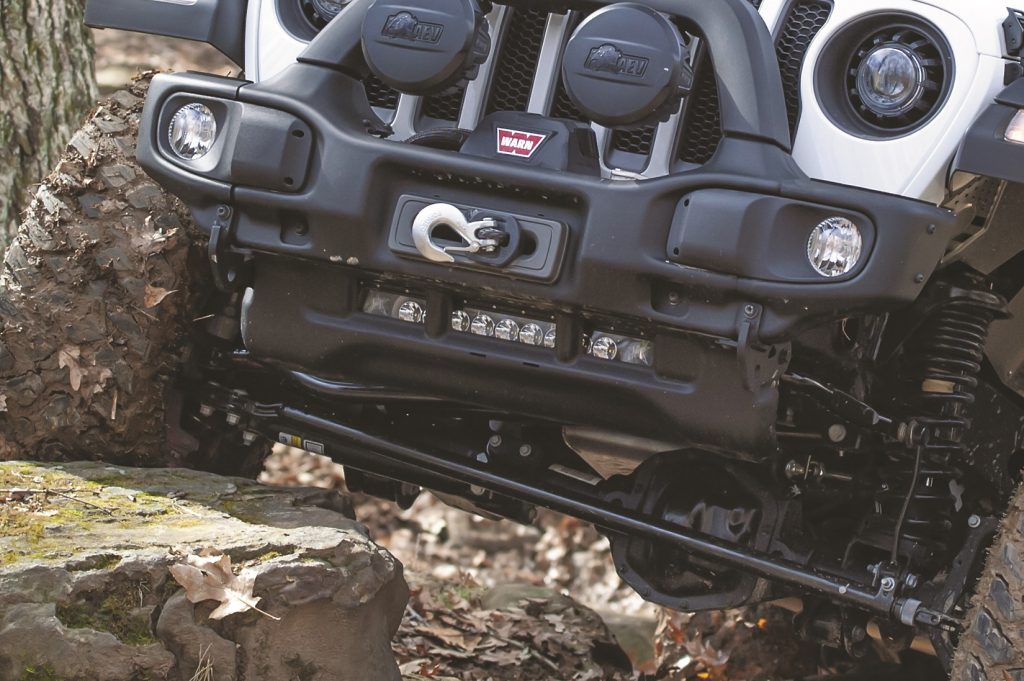Trucks are built to withstand changing conditions. Changing terrain. Changing speed. Changing trailer weight. Changing applications.
Commutes to work are different than rock crawling, and towing the race trailer is different than desert racing.
One of the best ways to deal with these changing demands on the fly is to incorporate adjustable shocks and/or struts into your truck’s setup.
What’s the Difference Between Shocks and Struts?
The short answer is, struts are a structural part of a vehicle suspension’s system and shocks are not. In addition to dampening, struts also aid in steering and alignment. The sole function of shocks is to eliminate bounce.
…
Common Shock/Strut Styles
Twin-Tube
Twin-tube shock absorber designs feature a larger inner tube (where the piston moves vertically) and an outer tube where air and fluid live to help dampen jostling. The piston diameter (also referred to as bore size) typically runs larger on trucks, allowing for greater shock absorption. Twin-tube shocks are a good choice for trucks that see highway driving and only infrequent trail use.
Monotube
Monotube shock designs provide a performance (and cost) increase over twin-tube designs, and are a popular choice for truck owners and frequent off-roaders. There is a pocket of nitrogen gas that helps keep pressure consistent within the shock absorber, allowing your truck’s suspension to tackle rougher terrain at higher speeds.
Nitro (Gas-Charged) Twin-Tube
Using the same twin-tube design as the fully hydraulic version, nitrogen gas is added, helping eliminate the tendency for hydraulic fluid and air to foam and reduce shock performance.
Reservoir
Reservoir shocks feature a hydraulic shock body with an attached external reservoir filled with nitrogen or pressurized air to assist with dampening.
Coilover
A coilover spring surrounds the shock body on coilover shocks, which helps with shock performance while carrying additional weight. Coilover shocks are a great choice for towing and hauling applications.
…
Adjustable Truck Shocks and Struts Buyer’s Guide
The great thing about adjustable shocks (invented in 1956) is the ability to adapt shock settings to changing applications.
Whether you’re commuting to work, hauling a trailer, or rock crawling, the right adjustment on the right shock (or strut) can really improve the experience no matter what you’re doing. Some shocks feature self-adjusting capabilities and many others feature external adjustment knobs on the shock body that allows you to adjust rebound and compression dampening to maximize performance no matter where or why you’re driving.
QA1 Stocker Star Shocks
These fully adjustable shocks feature 18 levels of damping which you select with the twist of a knob. They are available in a wide range of extended and collapsed lengths to fit your rig.
…
Rancho RS9000XL Shock Absorbers
These Rancho shocks and performance struts can be adjusted to nine different levels for stock or lifted trucks, allowing you to optimize performance for smooth road driving, off-road performance, or towing.
…
Bilstein 5100 Series Shocks
These shocks feature a patented digressive valving design which instantly reacts to changing surface conditions and provides maximum ride control and comfort both on and off-road.
…
SPC Performance Light Racing JounceShock Systems
The ultra-premium shocks provide next-level performance and durability, featuring external adjustment capabilities for compression and rebound. The JounceShock systems are nitrogen-charged, have a 2 3/8-inch diameter bore, are fully rebuildable, and are built from corrosion-resistant materials capable of withstanding any element. A little pricey. A lot awesome.






Comments